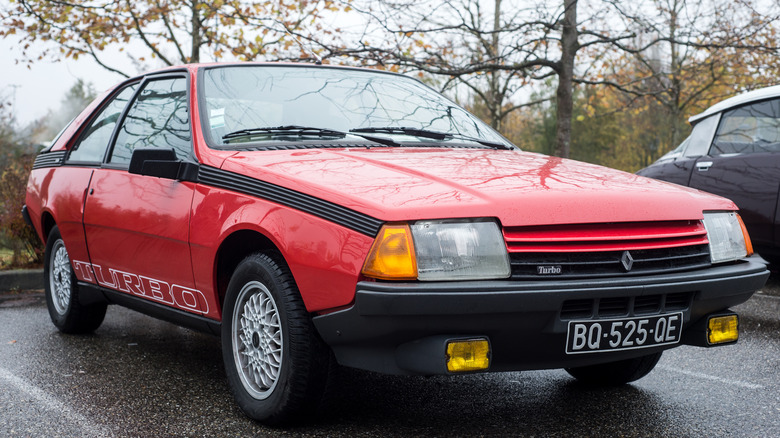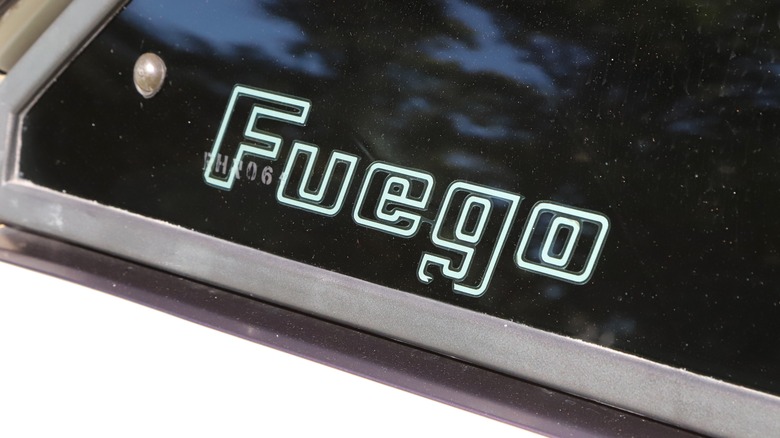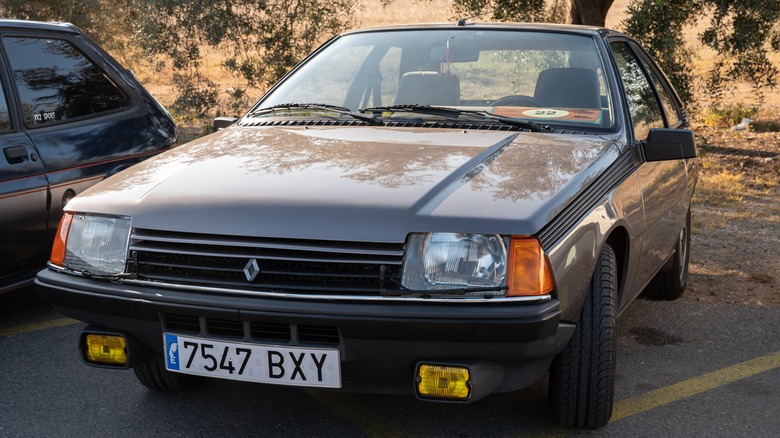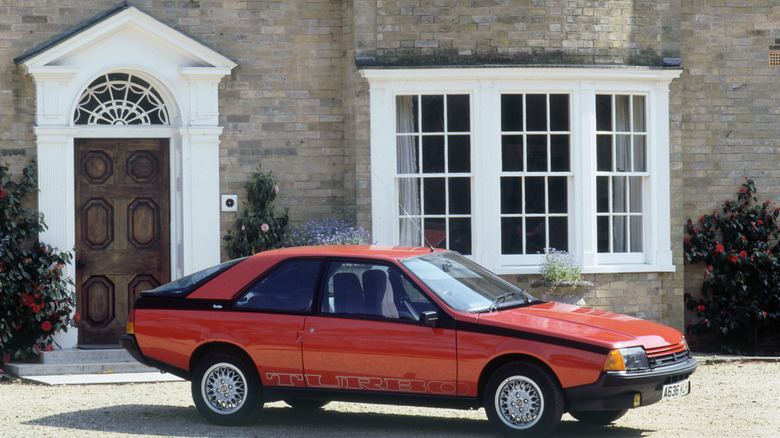The Speedy French Turbo-Diesel That America Forgot About
Often, the vehicles that truly make a lasting impact on our popular culture have some very specific qualities. They will probably be featured prominently on TV or in the movies, for instance. (After all, who could ever forget Arnold Schwarzenegger's Harley Fat Boy of "Terminator 2" fame?) They will have unique designs, and they probably also have capabilities that petrolheads just can't help but pay rapt attention to.
French auto manufacturer Renault, interestingly, created a model that shone with more than one of these characteristics, but nonetheless has gone on to be largely forgotten in the United States. Renault has made its share of great cars, but none have been quite forgotten like the Renault Fuego. Renault's underappreciated Fuego was a machine of impressive pace, a unique style, and, in its Turbo guise, some wonderfully outlandish lettering. The fact that its Spanish model name translates to "fire" in English probably makes it clear that its raw speed is one of those qualities.
How, then, did this potentially legendary model fail to capture U.S. imaginations as it perhaps deserved to? To shine some much deserved spotlight upon it, this piece will look back at its history, its specs, and the unfortunate situation at Renault that ultimately clipped its flaming wings. Its rarity today makes it something of a collector's item, but it deserved to be more than that.
The first Renault Fuego debuted in 1980
Renault's Fuego began taking shape in 1976 under the guidance of designer Robert Opron, who would play an important part in the design of vehicles from Citroën's GS to the unique Ami 6. As is common in the industry, the idea was to borrow from existing Renault fare while ensuring that the resultant model maintained enough of its own new identity. In this case, the Fuego was built upon the framework of the Renault 18, which itself would debut in the model year of 1979.
In the 1980 Geneva Motor Show, the first flaming Fuego was revealed. It would go on to launch that year in four guises, each of them gas-powered. The Fuego offered buyers considerable choice, with the smallest model containing a 1.4-liter, 64-horsepower engine with 75 lb-ft of torque and the largest a 2-liter version that boasted 110 horsepower and 118 lb-ft torque. Though its first guise may not have boasted the most stellar specs, it wasn't a machine to be trifled with either.
It was two years later that the Fuego arrived in the United States. At this point in its lifespan, Renault was really starting to put the "fuego" in Fuego.
The turbo-diesel Fuego was super fast for its time
Historically, Renault's naming conventions for its vehicles tended to simply be standard numbers, like Renault 18. The switch to "fuego" can be seen as something of a statement of intent from the company, and it's one that was important to back up. Was the Fuego truly on fire then? In terms of speed, it could certainly hold its own.
The original 1980 gas model had a top speed of 99.4 mph in its 1.4-liter guise, while the 2-liter topped out at 119.3 mph. The four different engine options packed relatively potent power from the beginning but were far from exceptional in that regard. Renault would have to push the stylish coupé further than that to give it a real chance of long-term success. The plan to do this was a very popular one among auto manufacturers. The brand released a more formidable version, the Renault Fuego Turbo, which boasted a turbocharged diesel engine.
According to a 1982 Renault catalog, while the Turbo package featured an engine from the 1.6-liter, four-cylinder domain just like the standard Fuego, it was "boosted an awesome 31% in power." What did this mean in terms of raw specs? Something very significant, actually, as this isn't just an empty brag: With a top speed of 110 mph, few other diesel models could match it. Well, for a brief moment, that is.
The Fuego's last year on sale in the US was 1985
With the 1983 arrival of the original 5 Series BMW (one of the company's iconic models), the Fuego Turbo lost its distinction to another diesel powerhouse. This 115-horsepower car from the German giant could outpace Renault's model. The latter was still a solid prospect for a sports coupé, but its appeal among U.S. drivers seemed rather limited.
Adaptations were made to the European vehicle to better suit the U.S. market, from engine adjustments to fit U.S. restrictions to more substantial bumpers, but they would do little to change the fact that Renault was far from the most heavyweight presence in the United States auto world. The company's Le Car, or Renault 5, was its most popular model in the region. Meanwhile, this particular vehicle never quite caught on fuego in the United States (or around the world) to the extent it could have, and its run was cut quite short.
Part of this is surely due to the fact that the company was embroiled in a difficult financial situation during this time. During the 1980s, Renault was forced to slash costs in order to become profitable again, and it was more important than ever to follow the market. Increasingly, it had been turning away from coupés like this. As a result, the Fuego family was phased out. Its last year on sale in the U.S. was 1985. By then, Renault's total sales there had fallen to 7,205.



